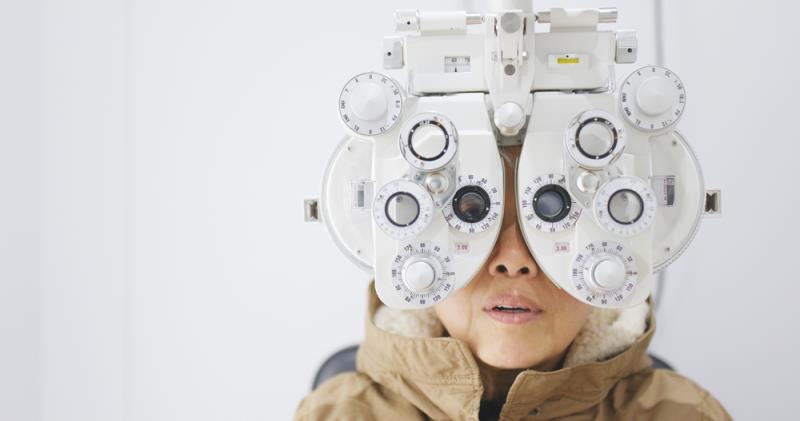
Moderate-to-severe visual impairment may be a predictor and risk factor of dementia in older adults, according to a 6-year study involving more than 15,000 community-dwelling older Chinese adults in Hong Kong.
Among 15,576 participants (mean age, 74.5 years; 63.8 percent female) without dementia, those with moderate or severe visual impairment at baseline had significantly increased risks of developing incident dementia at 6 years (moderate visual impairment: hazard ratio [HR], 2.09; 95 percent confidence interval [CI], 1.47 to 2.97; p<0.001) (severe visual impairment: HR, 8.66; 95 percent CI, 4.60 to 16.30; p<0.001), after adjusting for confounding factors and additionally excluding participants who developed dementia within 3 years of follow-up. [J Gerontol A Biol Sci Med Sci 2020, doi: 10.1093/gerona/glaa036]
However, mild visual impairment was not associated with a higher risk of incident dementia (HR, 1.19; 95 percent CI, 0.86 to 1.65; p=0.31) after the same adjustments and exclusion. Adjusted confounding factors were age, sex, educational level, socioeconomic status, cataract, glaucoma, cardiovascular risks, hearing impairment, poor mobility, depression, physical exercise, intellectual or social activities, fruit and vegetable consumption, and smoking.
Participants of the study were from the year 2005 cohort of the Department of Health’s Elderly Health Centres. Among these older adults, 1,349 (8.7 percent) developed incident dementia during 6 years or 68,904 person-years of follow-up.
Compared with those without dementia, those who developed incident dementia were older and predominantly female, with lower educational attainment and socioeconomic status, higher prevalence of physical and psychiatric comorbidities, and lower adherence to healthy lifestyle practices.
While moderate and severe visual impairment at baseline were associated with significantly increased risks of incident dementia, the researchers found no difference in longitudinal changes of visual acuity between those who remained cognitively stable and those who developed incident dementia in years 4–6 of follow-up.
In contrast to recent findings, the researchers also found no independent association between cataract or glaucoma and an increased incidence of dementia. [Medicine (Baltimore) 2016, doi: 10.1097/MD.0000000000003658; Alzheimers Dement 2019;15:34-41] This could possibly be explained by the fact that the onset, duration, severity and treatment of these ophthalmic conditions were not assessed in the current study, the researchers suggested.
In this longitudinal observational study, researchers provided annual standardized clinical assessment of cognitive status and comprehensive examination of a wide range of lifestyle behaviours, physical and psychiatric comorbidities, and sociodemographic factors to the participants. Older adults residing in care homes, those with Parkinson’s disease, stroke or dementia, those not completing the visual acuity test at baseline, and those who did not provide a description of their leisure activity pattern were excluded.
The participants’ mean visual acuity was 0.46 LogMAR (approximate Snellen equivalent, 20/58) at baseline. Those who developed incident dementia had significantly poorer visual acuity at baseline than those who remained cognitively stable (mean, 0.51 LogMAR vs 0.46 LogMAR; p<0.001).
“Our findings support and extend previous literature that poor visual acuity is an important factor in understanding dementia risk in older adults,” the researchers concluded. “With moderate-to-severe visual impairment being a potential predictor and possibly a risk factor for dementia in older adults, our findings suggest that those with poor visual acuity might warrant further dementia risk assessment and management.”